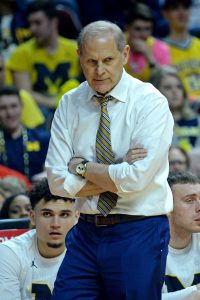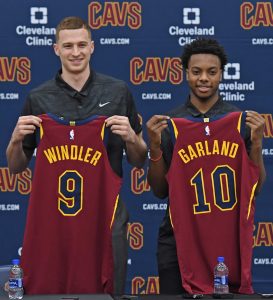With all those contracts on the books, the Cavs had little flexibility to do anything in free agency. And since most of those vets on expiring deals don’t have positive trade value, the club also didn’t have much leverage to get anything done on the trade market.
As such, the Cavs had essentially completed their offseason work by the end of draft night. The team hired a new head coach in the spring, then added three first-round prospects at the draft. One of those three first-rounders – Kevin Porter Jr. – was acquired in Cleveland’s only trade in the offseason, and the cap-strapped club didn’t sign a single veteran free agent to a guaranteed contract.
While the Cavs may have liked to make a few more moves and accelerate their rebuild a little, their cap situation necessitated patience. The organization will be in a better position to be more active at this year’s trade deadline or in the 2020 offseason.
Key offseason losses:
None of the departing Cavaliers players were core pieces. Channing Frye and J.R. Smith were key contributors during the team’s NBA Finals years, but neither player saw much action last season, though Frye at least was still a positive presence in the locker room.
Marquese Chriss and Nik Stauskas, two former lottery picks, arrived in midseason trades and got a chance to make an impression in the Cavs’ rotation. Stauskas played well enough to earn a roster spot on a contender (Portland). However, Chriss struggled and has seemingly generated little interest on the free agent market this summer, just three years after he was drafted eighth overall. He remains unsigned.
David Nwaba is the other notable departure for the Cavs. The young swingman played some solid two-way ball in Cleveland last season, but he wasn’t in the team’s long-term plans. Despite the fact that he was eligible for restricted free agency, the Cavs did him a favor by declining to tender him a qualifying offer, allowing him to sign outright with the Nets.
Key offseason additions:
Having failed to secure a top-four pick in this year’s draft lottery, the Cavaliers missed out on the very best prospects in the 2019 rookie class, including Zion Williamson, Ja Morant, and RJ Barrett. With the No. 5 overall selection, Cleveland nabbed Darius Garland, the second point guard drafted in the top 10 by the team in the last two years.
If the Cavs viewed Garland as the best player available, he was the right pick in that spot, but it’s not an ideal outcome for the Cavs that their first two lottery picks in the post-LeBron era – Garland and Collin Sexton – essentially play the same position. While Sexton sounds bullish on the duo’s chances to emulate the success of Damian Lillard and CJ McCollum in Portland, that may be an unrealistic goal. It will be interesting to see how the two young guards complement one another.
Cleveland completed its draft by selecting Dylan Windler at No. 26 and Porter at No. 30. Windler, who made 3.0 three-pointers per game at a 42.9% rate in his final season at Belmont, will add some outside shooting to the roster, while Porter is the sort of low-risk, high-upside prospect the Cavs can afford to gamble on at this point in their rebuild — especially since the former USC Trojan became the first player in years to accept a salary lower than 120% of his rookie scale amount.
New head coach John Beilein is the other important addition for the Cavaliers this offseason. Based on the candidates who interviewed to replace Larry Drew, it appeared the team was targeting an up-and-coming assistant in the mold of Lloyd Pierce or Taylor Jenkins. Instead, the 66-year-old Michigan head coach was the choice.
While he doesn’t necessarily fit the mold we envisioned, Beilein makes sense as the pick to lead the Cavs’ rebuild — he has spent the last several decades getting the most out of young college players at Michigan, West Virginia, Richmond, and a handful of other schools, establishing his bona fides as a developmental guru. He’ll look to do the same in Cleveland, working with the likes of Garland, Sexton, Cedi Osman, and Ante Zizic, among others.
Outlook for 2019/20:
With a 19-63 record, the Cavaliers were one of the NBA’s worst teams in 2018/19. Given how little their roster changed during the summer, there’s no reason to believe they won’t be firmly in the lottery once again in 2019/20.
If he’s healthy and isn’t traded before the deadline, Kevin Love could help Cleveland win a few more games, but this is a team that will be focused more on player development than its spot in the standings. The Cavs figure to have fewer veterans on their roster by the end of the season than they do today, and won’t be making the pivot to serious playoff contention for at least another year or two.
Salary information from Basketball Insiders was used in the creation of this post. Photos courtesy of USA Today Sports Images.

